Climate tipping points are thresholds that, when exceeded, can push the climate system into a completely new state. They are major climate events caused when particular impacts of global warming become unstoppable, such as coral reef die-off, permafrost loss, the disintegration of the Greenland ice sheet, or the Amazon rainforest turning into a savanna.
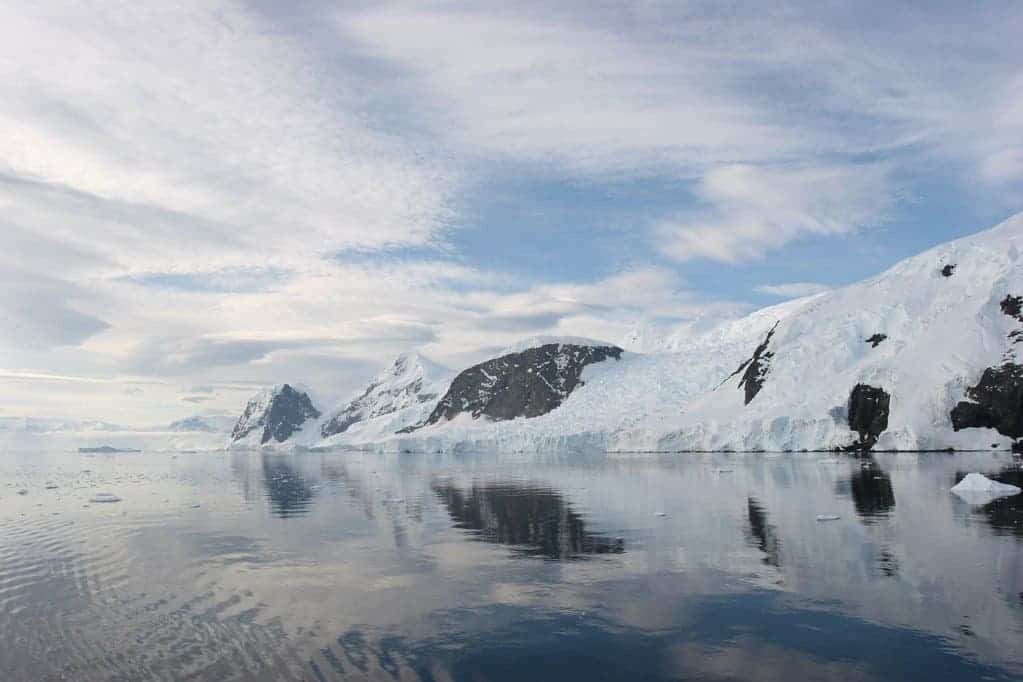
Tipping points
Imagine you’re rolling a ball up a hill. As you walk up, you push the ball up and it goes up a bit and then rolls back into your hands. However, once you roll the ball over the top of the hill, if you keep pushing it, it starts rolling away — and you’re not catching it again. The top of the hill is the tipping point: every nudge past that point will trigger a reaction you won’t be able to stop.
The Earth’s climate system is like the ball we’re pushing up the hill. We keep pushing it up, and it seems to manage to readjust. But if we reach the top of the (climate) hill, any extra push will cause an irreversible change. Of course, it’s not one hill with one peak, but rather several that we can cross.
The Intergovernmental Panel on Climate Change (IPCC), a leading group of global climate experts, introduced the concept of climate tipping points two decades ago, claiming they would be likely if global warming exceeded 5ºC. But the latest reports by the IPCC suggest tipping points could be exceeded somewhere between 1ºC and 2ºC of warming. Similarly, a group of researchers, led by Tim Lenton at Exeter University, England, warned in a landmark paper 12 years ago about the risks of tipping points. They thought the dangers would only arise if global warming exceeded 5ºC. But in 2019 they updated their research and said the risks are much more likely and much more imminent.
Until recently, scientists used to believe that it was unlikely for the planet to pass any global-scale climate tipping points this century. That’s no longer the case. There is now increasing evidence and scientific agreement that we are closer to crossing them than we thought. The planet has already warmed 1ºC and temperatures will keep rising further.
We need to reduce emissions to avoid these climate tipping points
A big part of the reason why researchers want more urgency in our reduction of greenhouse gas emissions is that if we do reach a tipping point, the damage will be irreversible. Countries have pledged, in the Paris Agreement, to reduce emissions and limit global warming. If countries’ current pledges to reduce their greenhouse gas emissions are met, they are likely to result in at least 3ºC of global warming, triggering tipping points. This is despite the goal of the 2015 Paris Agreement on climate change to limit global warming to 2ºC or ideally 1.5ºC. Our current trajectory is very far from that target.
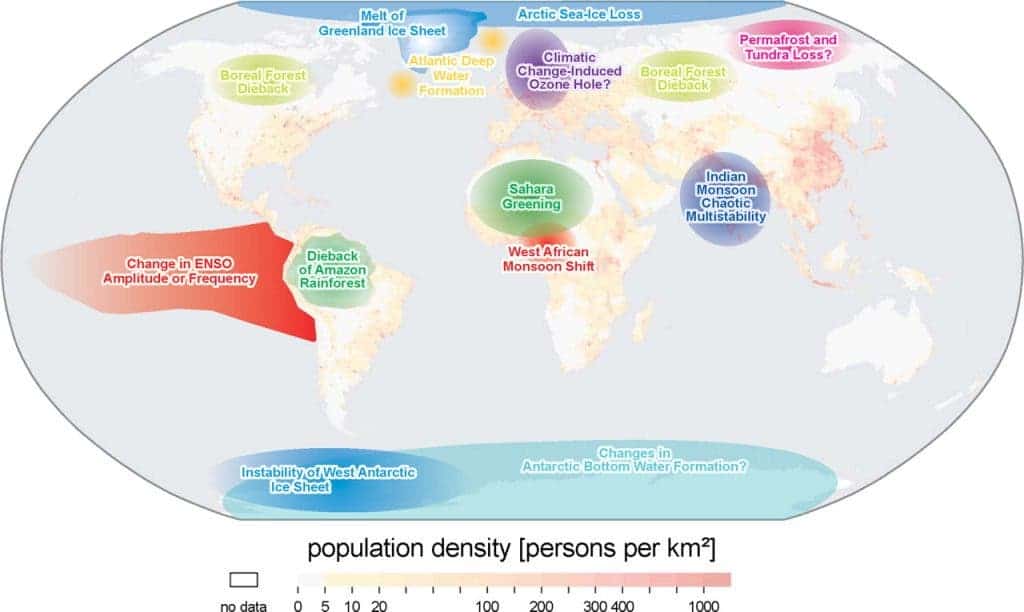
A study earlier this month found that each tipping point can interact and destabilize each other, causing a domino effect with severe consequences. Researchers ran over three million computer simulations and found domino effects in a third of them, even under scenarios in which the Paris Climate Agreement targets are met.
Let’s have a look at some key climate tipping points.
The Amazon rainforest
The Amazon is the largest rainforest in the world, spanning across nine countries in South America and home to millions of species. The forest is saturated by heavy rains and much of the moisture is returned to the atmosphere through evaporation. Additionally, transpiration of moisture from plants transfers water from soils into the atmosphere.
These two processes combined are called “evapotranspiration”. They keep the atmosphere moist, but also help drive convection – strong upward motion of the air – which, ultimately, creates clouds and more rainfall. The Amazon generates around half of its own rainfall. Reducing this process (by reducing the number of trees through deforestation, for instance) would shift the climate into a drier state.
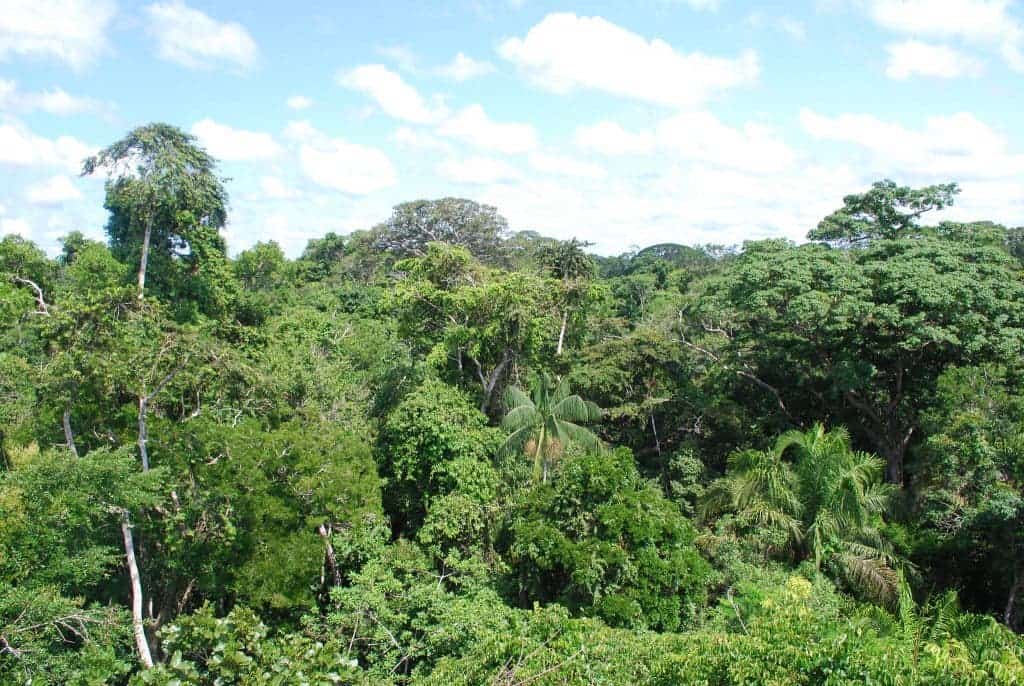
The Amazon can tolerate drying up to a point before no longer being able to support itself. Beyond this tipping point, the forest would see widespread “dieback” and transition to a savannah, a drier ecosystem dominated by open grasslands with few trees. It’s estimated that 4ºC would be the tipping point to create a savannah in the Amazon.
One of the contributing factors is deforestation, which could accelerate this shift. Studies estimate that about 17% of the Amazon rainforest has been cleared so far, mainly for cattle ranching and soy plantations. Deforestation rates slowed down in the early 21st century but have recently rebounded, especially in the Brazilian Amazon.
The permafrost
Permafrost is the name given to ground, soil or rock with ice or frozen organic material that has remained at or below 0ºC for at least two years. It covers about a quarter of the non-glaciated land in the northern hemisphere, including large areas in the Tibetan plateau, Siberia, Alaska, and Canada. And it can be as much as a kilometer thick — but it’s also not free from the effects of climate change, and that’s a very dangerous thing.
The permafrost holds a massive amount of carbon dioxide (CO2), accumulated from dead plants and animals over thousands of years. It’s estimated that there’s about twice as much carbon in permafrost than is currently in the atmosphere. As global warming keeps worsening, there’s a growing risk that the permafrost will thaw.
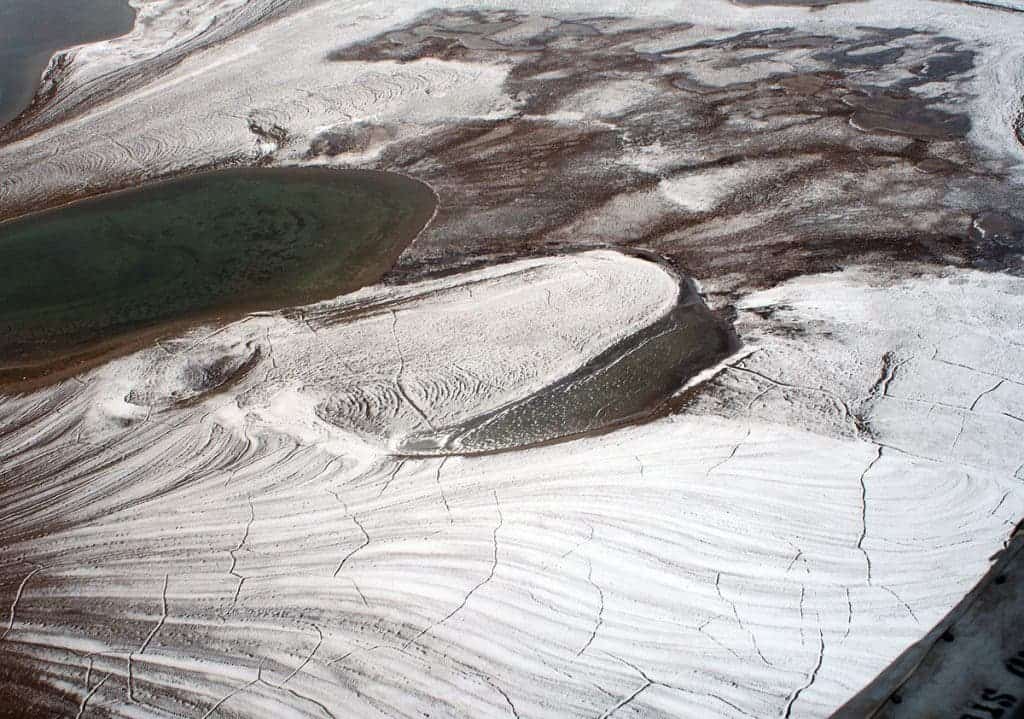
This would bring microbes in the soil out of hibernation, allowing them to break down the organic carbon in the soil. The process releases CO2 and methane, causing further climate warming. There’s already evidence of permafrost warming. The IPCC has recorded record high temperatures at 10 to 20 meters depth in permafrost in its recent reports.
The 2019 Arctic Report Card from the US National Oceanic and Atmospheric Administration (NOAA) found that thawing permafrost in the Arctic “could be releasing an estimated 300-600m tons of net carbon per year.” The lead researcher of the study, Ted Schuur, told The Washington Post that the research shows “we’ve turned this corner for Arctic carbon”.
West Antarctic Ice Sheet (WAIS)
It’s one of the three regions that make up Antarctica, the other two being East Antarctica and the Antarctic Peninsula, with the Transantarctic Mountain range dividing east from west. It holds enough ice to raise global sea levels by around 3.3 meters, so even a partial loss of its ice would be significant around the world.
Researchers are concerned over its long-term stability as it’s a “marine-based” ice sheet. This means that WAIS sits “upon bedrock that largely lies below sea level and [is] in contact with ocean heat, making [it] vulnerable to rapid and irreversible ice loss,” as explained by the IPCC special report on the ocean and cryosphere.
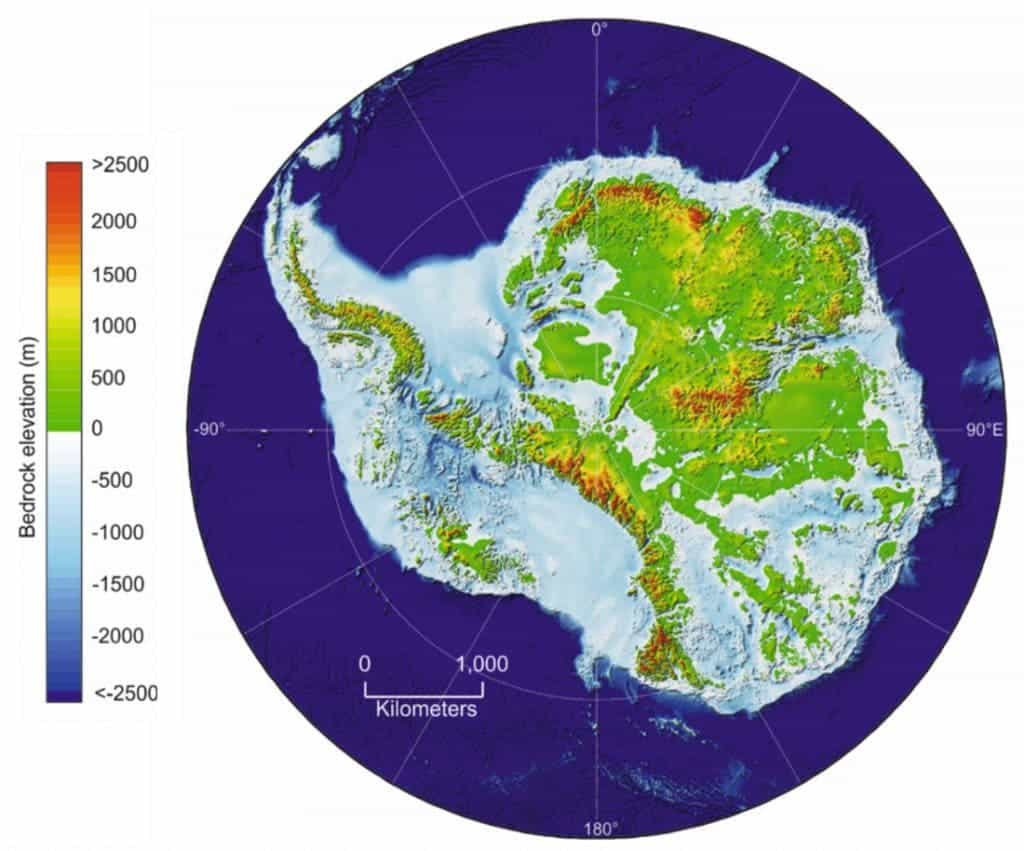
The ice of the WAIS gradually flows out from its interior towards the coast and then into the Southern Ocean. Snowfall on the ice sheet replenishes the lost ice. If the ice sheet loses more ice than it gains in snow, then it adds to global sea levels. The rate of ice loss from the WAIS has tripled in two decades from 53 billion to 159 billion tons a year.
The collapse of the WAIS’s ice shelves could cause a positive feedback loop that sees rapid and irreversible loss of land ice into the ocean. A 2018 study concluded that “a key threshold for survival of Antarctic ice shelves, and thus the stability of the ice sheet, seems to lie between 1.5 and 2C mean annual air temperature above present.” Ice also reflects more solar energy. The land or water it gives way to will absorb more heat, triggering more warming.
Coral die-off
Corals are usually highlighted as one of the ecological systems most affected by global warming. Recent years have seen a set of mass bleaching events in warm water corals, caused mainly by prolonged exposure to high sea temperatures. When facing continued heat stress, corals expel the colorful algae living in their tissues.
The algae give the corals energy through photosynthesis. Without them, the corals slowly starve. Mass coral-reef bleaching events have become five times more common around the world over the past 40 years. They are caused by marine heatwaves, long periods of unusually high temperatures that were boosted by global warming.

A study last year suggested that, once tipped, Caribbean coral reefs could collapse within 15 years. Such timescales are in line with the 80% decline seen in corals across the Caribbean from 1977 to 2001, the authors argued. All could be gone by 2035, depending on rates of overfishing, climate change and acidification, they added.
Atmospheric concentrations above 500 parts per million are “extremely risky” for coral reefs and the people that depend on them, according to a review study from 2007. CO2 levels have already surpassed 410 ppm and are projected to exceed 500 ppm by 2100 in all but the most stringent mitigation scenarios for emissions this century.
The Atlantic Meridional Overturning Circulation (AMOC)
It’s a system of currents in the Atlantic Ocean that brings warm water up to Europe from the tropics and beyond. The AMOC is part of a wider network of global ocean circulation patterns that transports heat all around the world. Studies suggested that AMOC has weakened by around 15% since the middle of the 20th century.
“Perhaps a much less likely, but larger cause for concern is whether there’s a threshold beyond which the AMOC becomes unsustainable and at that point – if you pass that threshold – then over some period of time, the AMOC might reduce to zero or even potentially a reversed circulation,” Richard Wood from Met Office told Carbon Brief.
In its special report on 1.5ºC of warming, the IPCC concludes that it’s very likely that the AMOC will weaken over the 21st century. Nevertheless, the IPCC sees “no evidence indicating significantly different amplitudes of AMOC weakening for 1.5ºC versus 2ºC of global warming, or of a shutdown of the AMOC” at these temperatures.
If AMOC crosses a tipping point, it would trigger “a decline that takes decades,” Wood said, followed by a slower decline that could take hundreds of years. This would cause widespread cooling of up to 5ºC around the northern hemisphere, but particularly affecting western Europe and the east coast of North America, Wood explained.
Boreal forests
They are located in cold climates of the northern hemisphere high latitude, covering large areas of North America, northern Europe and Asia. Boreal forests are the largest biome or ecosystem and account for 30% of the world’s forest cover, hosting species that can cope with the very cold temperatures, such as the larch (larix) and the pine (pinus).
Boreal forests are a very important store of carbon, with estimates suggesting they hold more than one third of all terrestrial carbon. And about a third of the biome is coated in permafrost. But the boreal forest is warming fast, about twice as quickly as the global average. If this continues, it could generate rapid changes in the forest.
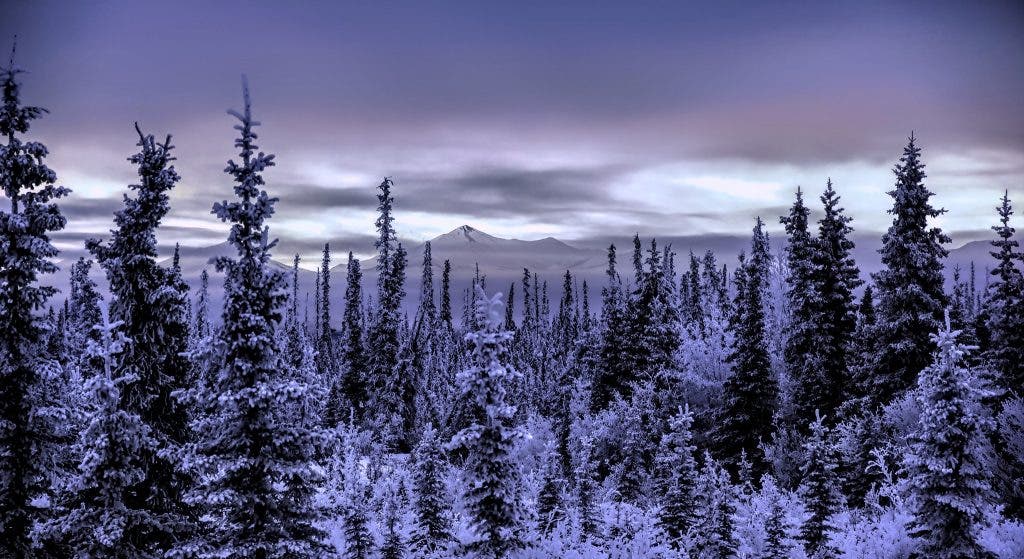
A 2017 review paper found that rapid warming and “naturally lower tree species diversity” could put boreal regions at particular risk of natural forest “disturbances” by factors such as drought, fire, pests and disease. Compared to other ecosystems, the study found that changes “are likely to be most pronounced” in the boreal biome.
The IPCC’s 1.5C report said it has “high confidence” that “woody shrubs are already encroaching into tundra and will proceed with further warming”. It also says that abrupt increases in tree cover are “unlikely” at 1.5ºC-2ºC of warming. Above 2ºC of warming, there is “potential” for abrupt increases but with a “low confidence” level.
Other tipping points
The potential tipping points just described are some of the main ones but there are many other parts of the Earth system that have the potential to display a tipping point. Some examples include a change in the frequency and the strength of El Niño, the loss of alpine glaciers, and a climate-change-induced hole in the ozone layer above the Arctic.
Whether the planet sees these tipping points happening or not will depend on the action taken by humanity to stop the climate crisis. So far ambition remains low, based on the current climate pledges. But there’s still hope that countries will present more significant plans to reduce their greenhouse gas emissions ahead of the COP26 summit.


